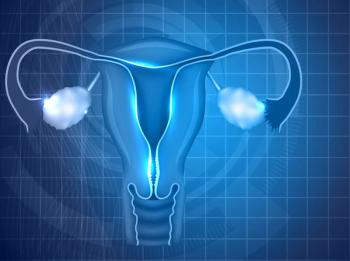
First Therapeutic Vaccine Against HPV Shows Promise
An investigational vaccine has shown activity as a therapeutic treatment for high-grade pre-cancerous cervical lesions caused by the human papillomavirus.
An investigational vaccine has shown activity as a therapeutic treatment for high-grade precancerous cervical lesions caused by the human papillomavirus (HPV). The vaccine, VGX-3100, is the first therapeutic vaccine to show efficacy for such lesions. The results of the phase IIb placebo-controlled study is published in the Lancet.
Of the 107 women on study who received all three vaccine doses, 53 (49.5%) had regression of their lesions, as assessed by biopsy, compared with 11 of 36 women (30.6%) in the placebo group. Among women who received at least one vaccine dose, 48.2% (55 of 114 patients) had regression of their cervical intraepithelial neoplasia (CIN) compared with 30% (12 of 40 patients) in the placebo group (P = .034).
While HPV vaccination can protect against new cervical HPV infections, women remain at risk of infection with specific cancer-causing HPV haplotypes and those who have a persistent infection are not generally helped by a prophylactic vaccine. Moreover, both men and women are susceptible to infections at other sites including the oral cavity and the anus. An infection can progress to CIN2 or CIN3, which can either be resolved spontaneously by the immune system or can progress to cancer.
The current recommended treatment for cervical precancerous lesions is surgical excision, which results in removal of a portion of the cervix and can result in a weakened cervix and inability to carry a pregnancy to term. “A vaccine able to cure precancerous lesions could eventually be one way women can avoid surgery that is invasive and can also harm their fertility,” said author Cornelia Trimble, MD, professor of gynecology and obstetrics and oncology at the Johns Hopkins University School of Medicine in Baltimore, Maryland, in a statement.
VGX-3100, manufactured by Inovio Pharmaceuticals, is a genetically engineered vaccine consisting of two DNA plasmids that encode two HPV oncoproteins and presents these proteins to immune cells for recognition of precancerous and cancerous cells.
The vaccine was administered as an injection in the arm. The most common adverse event was injection site erythema, which was slightly higher in the VGX-3100 arm compared to the placebo arm (78.4% vs 57.1%). Other common adverse events were fatigue, headache, myalgia, malaise, nausea, and arthralgia.
Patients with biopsy samples that showed a complete lesion regression had statistically significantly higher T-cell counts compared with those patients in the placebo group (P = .001). “This is a great first step,” said Trimble. “We showed that the vaccine may enable an immune response in a person whose immune system was initially not adequately engaged or was hampered in some way so as to let the lesion occur.”
The results, stated the study authors in their discussion, provide a promising nonsurgical option for treating CIN2 and CIN3 and “could change the approach to care for this very common disease.”
Newsletter
Stay up to date on recent advances in the multidisciplinary approach to cancer.
















































































